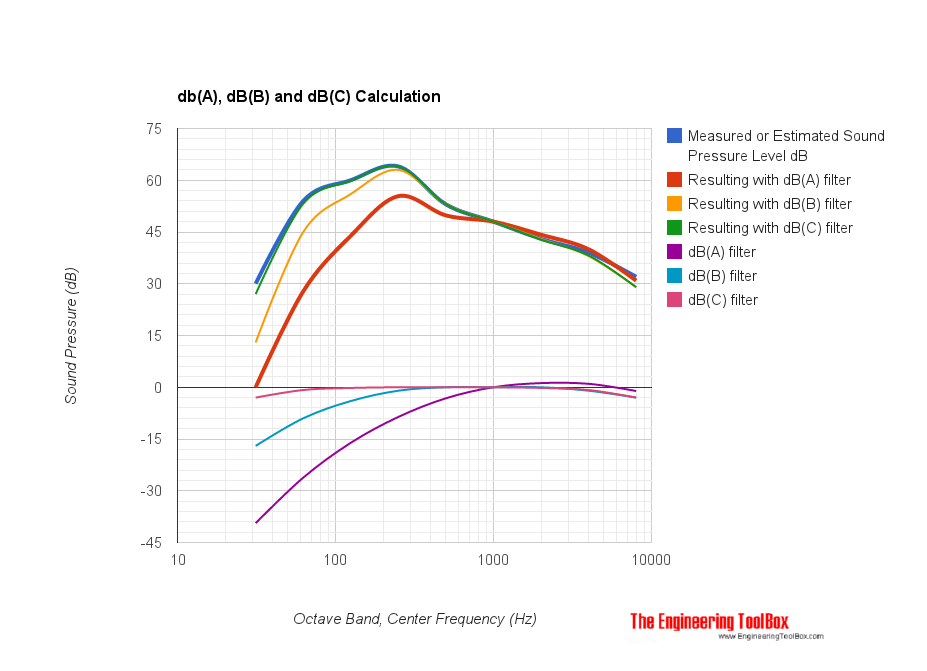https://www.engineeringtoolbox.com/decibel-d_59.html
The human ear is more sensitive to sound in the 1 to 4 kHz frequency range than to sound at very low or very high frequencies. Regarding noise - higher sound pressures are therefore more acceptable at lower and higher frequencies than in the mid range. Knowledge about the human ear is important in acoustic design and sound measurement. To compensate for the human hearing sound meters are normally fitted with filters that adapts the measured sound response to the human sense of sound. Common filters are dB(A)The decibel A filter is widely used. dB(A) roughly corresponds to the inverse of the 40 dB (at 1 kHz) equal-loudness curve for the human ear. With the dB(A) filter the sound level meter is less sensitive to very high and very low frequencies. Measurements made with this scale are expressed as dB(A). Note! The abbreviation dBA or db(A) is not recognized by SI. According to SI - use "the A weighted sound pressure level is x dB" or "LA is x dB" where x = the weighted sound pressure level (dB)
Anyway - dBA (or dB(A)) is commonly used. dB(B) and dB(C)The decibel C filter is practically linear over several octaves and is suitable for subjective measurements at very high sound pressure levels. The decibel B filter is between C and A. The B and C filters are seldom used. Comparing dB(A), dB(B) and dB(C)The A, B and C decibel filters compared: Relative Response (dB)Frequency (Hz)
31.2562.51252505001000200040008000
dB(A)-39.4-26.2-16.1-8.6-3.201.21-1.1
dB(B)-17-9-4-1000-1-3
dB(C)-3-0.8-0.2000-0.2-0.8-3
Example - Measuring dB(A)Octave band, Center Frequency (Hz)62.51252505001000200040008000
Measured Sound Pressure Level
(dB) 5460645348433932
db(A) Filter
(dB)2616940-1-11
Resulting Sound Pressure Level dB(A)
(dB) 2844554948444031
- Logarithmic adding decibels in octave 4 and 5 gives approximately 51.5 dB.
- Logarithmic adding decibels in octave 3 together with the sum from 4 and 5 (1) gives approximately 56.5 dB.
- The resulting sound pressure level in octave 1, 2, 6, 7 and 8 is low compared with (2) and can be neglected.
- The resulting sound pressure level can therefore be estimated to approximately 57 dB(A)
db(A), dB(B) and dB(C) Calculation Spreadsheet Adjustments to dB(A) Adjustments to dB(A)Adjustments to the base level of 40 dB(A): ContextAdjustment
dB(A)
Character of sound Tones or impulsive noise readily detectable -5
Tones or impulsive noise just detectable -2
Time of day Evening -5
Night time -10
Neighborhood Rural and outer suburban areas with little traffic 0
Suburban areas with infrequent traffic 5
Suburban areas with medium density traffic 10
Suburban areas with some commerce or industry 10
Areas with dense traffic and/or commerce or industry 15
City or commercial areas with very dense traffic and/or bordering industrial areas 20
Industrial areas and/or extremely dense traffic 25
|